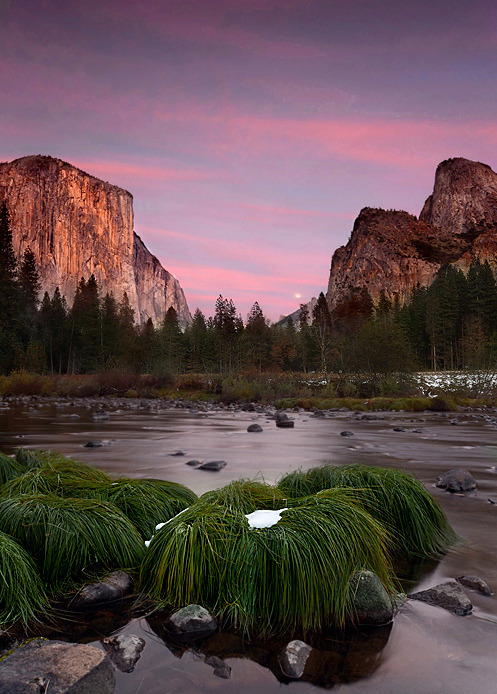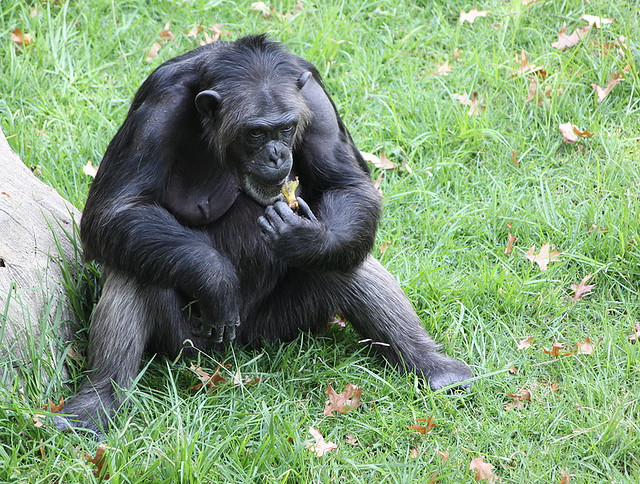Still sizing up your summer travel plans? Well, if you’re
looking to enjoy some of the most fascinating locations ever created by
Mother Nature, then you might want to check out one of these gorgeous
and strange natural landmarks.
Salar de Uyuni, Bolivia
The
title of “world’s largest salt flat” might not sound all that exciting,
but when you actually see pictures of these gorgeous 4,000 miles of
flatlands, you’ll immediately see why they are so special. The entire
salar is covered with a salt crust that becomes a giant mirror when it
gets rained on. The mirror-like planes offer such a strong reflection
that satellites even use the salar to recalibrate their systems. As if
that weren’t a cool enough sight, the area is also a major breeding
ground for flamingos who feed on the brine shrimp and red algae that
thrive in the shallow water. Vacationing in the salt flats is a unique
experience, as you not only get to enjoy the beauty of the landmark, but
you will most likely stay in a hotel built from the only available
natural resource in the area –blocks of salt. At many of these local hotels, even the furniture is made from salt!
Pamukkale, Turkey
When
you see the pictures of these natural hot springs, consisting of a
multitude of natural mineral terraces, you’ll see why the ancient Turks
called it “cotton castle,” and why the area was named a World Heritage
Site. The terraces are made from travertine, a sedimentary rock that is
created from jelly-like calcium deposits in the hot springs themselves.
Of course, while people come to see the terraces, they stay for the
stunning hot springs, which range in temperature from nice and warm at
95 degrees to nice and deadly at 212 degrees. While bathing in the pools
has been a popular attraction for millennia, these days, it is illegal
to wear shoes in the water in order to protect the mineral deposits from
damage.
Dallol, Ethiopia
The
salt and sulfur formations at Dallol look more like a set on a sci fi
film than a real place on Earth, but these gorgeous hot springs, formed
in a volcanic crater, are very real –and very dangerous. Unlike the hot
springs of Pamukkale, the springs and geysers here release brine and
toxic fumes, the very reason Dallol has such a fascinating color scheme.
And the water’s still not safe once it’s on the surface, the pools of
green water are dangerously acidic, hence the area’s name, which
translates to “disintegration” in the local tongue. As if all that
weren’t enough to keep you away, Dallol is one of the hottest places on
earth, with an average yearly temperature of 93 degrees –keep in mind
that means that it can get much, much hotter throughout the year. This
is definitely one of those landmarks that is better seen in pictures
than in person.
Jellyfish Lake, Palau

If
someone wants you to “sleep with the fishes,” that’s a threat. On the
other hand, if they say you might soon be “swimming with the
jellyfishes,” they could be offering you a magical experience on the Eil
Malk island in Palau. While snorkeling around a bunch of jellyfish is
usually a terrible idea, this is a special circumstance because these
two particular species do not have enough toxins in their bodies to hurt
humans. That’s because they evolved in a lake where they have so few
natural predators and their diet consists of zooplankton and algae,
which do not need to be captured using the jellyfish’s stinger. Scuba
diving is illegal in the lake because the bubbles may injure the
jellyfish and because the bottom layer of the lake consists largely of
hydrogen sulfide, which can be deadly if absorbed through the skin.
Snorkeling requires the swimmer to stay somewhat near the surface and
since this deadly lake layer sits 50 feet below the surface, it is safe
to snorkel. In a way, swimming with jellyfish in a stratified lake that
contains deadly levels of hydrogen sulfide is one of the safest (and
most fun) ways to cheat death, which is probably why the lake is such a
popular tourist destination.
Giant’s Causeway, Northern Ireland

Here’s
one you Led Zeppelin fans are no doubt familiar with, as it was
famously featured on the cover of their Houses of the Holy album. For
those that aren’t aware though, the Giant’s Causeway is a massive area
of interlocking basalt columns created after an ancient volcanic
eruption. The lava cooled rapidly and then contracted, leaving many deep
cracks that were further deepened thanks to erosion, creating around
40,000 pillar-like structures. The World Heritage Site is now considered
one of the top natural landmarks in all of the U.K. and the most
popular tourist attraction in Northern Ireland. Of course, the legends
surrounding the amazing landmark only add to the area’s intrigue. The
most famous legend says that an Irish warrior built the causeway so he
could walk to Scotland to fight his Scottish rival. Unfortunately, after
seeing his enemy’s size, he fled in fear and then asked his wife to
help disguise him as a baby. When the Scotsman came calling and saw the
massive “infant,” he assumed the father must be a giant, so he ran back
to Scotland, destroying the rest of the causeway in order to stop the
giant from following him home. The legend fits in with nature as there
are similar basalt formations on the isle of Staffa in Scotland that
were actually created by the same ancient lava flow.
Zhangjiajie National Forest Park, China

If
you were one of the many people to fall into a deep depression after
realizing you’d never be able to get to visit the land of Pandora
featured in Avatar, then you might feel better after taking a trip to
Zhangjiajie National Forest Park. After all, the stunning natural
setting was one of the biggest inspirations for the floating forests of
Pandora and the most famous of the mountains has even recently been
renamed the “Avatar Hallelujah Mountain” in honor of the film. Even if
the entire area doesn’t become a bioluminescent wonderland after dark,
it is still simply gorgeous, consisting of dozens of massive,
pillar-like rock formations covered in rich, natural foliage. The
massive columns were created by erosion and given that the weather in
the park is pretty wet all year round, it’s easy to imagine massive
cliffs getting readily worn down by the constant moisture, particularly
by the expanding ice that freezes the area in the winter. The area is so
famous in China that it actually became the country’s first national
forest park and it can be seen represented in hundreds of ancient
Chinese paintings.
The White Desert, Egypt
While
we tend to think of deserts all consisting of orange sand dunes, they
really do come in all sorts of textures and colors. Even so, the White
Sesert located in the greater Sahara Desert is still a drastic change
from the usual. The gorgeous white and cream chalk formations, that look
like they could fall at a moment’s notice, were created as a result of
sandstorms in the area breaking down a large plateau that was created
millennia ago, when the area was still under the sea. In some areas, it
almost looks as though the desert recently was buried under a bizarre
snow storm.








 Hiroshi
Mikitani, the founder of Rakuten Inc., has a bold approach to making
his company competitive in international markets. He's making employees
conduct all of their communications--meetings, emails, verbal
conversations--in the English language:
Hiroshi
Mikitani, the founder of Rakuten Inc., has a bold approach to making
his company competitive in international markets. He's making employees
conduct all of their communications--meetings, emails, verbal
conversations--in the English language:
 Recently, while out for a walk in Nose Hill Park, in broad daylight on a
paved trail, two young men approached my wife and me. The men stepped
in front of us, then said in a very aggressive tone: "Been to the
Stampede yet?"
Recently, while out for a walk in Nose Hill Park, in broad daylight on a
paved trail, two young men approached my wife and me. The men stepped
in front of us, then said in a very aggressive tone: "Been to the
Stampede yet?"

 A
carjacker in Shreveport, Louisiana experienced a major failure in the
victim selection process when he tried to take a car that was stopped at
a red light. Inside were three US Marshals:
A
carjacker in Shreveport, Louisiana experienced a major failure in the
victim selection process when he tried to take a car that was stopped at
a red light. Inside were three US Marshals: American Jewelry and Loan in the famous Detroit pawn shop where the reality TV show Hardcore Pawn
is shot. According to its flamboyant owner Les Gold, people travel
enormous distances to visit it and possibly appear on the hit show. One
customer took even more extreme measures. He tried to sell his
counterfeit money and the machine that he used to make it:
American Jewelry and Loan in the famous Detroit pawn shop where the reality TV show Hardcore Pawn
is shot. According to its flamboyant owner Les Gold, people travel
enormous distances to visit it and possibly appear on the hit show. One
customer took even more extreme measures. He tried to sell his
counterfeit money and the machine that he used to make it:
















